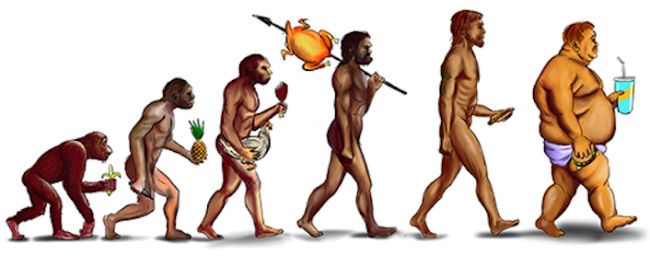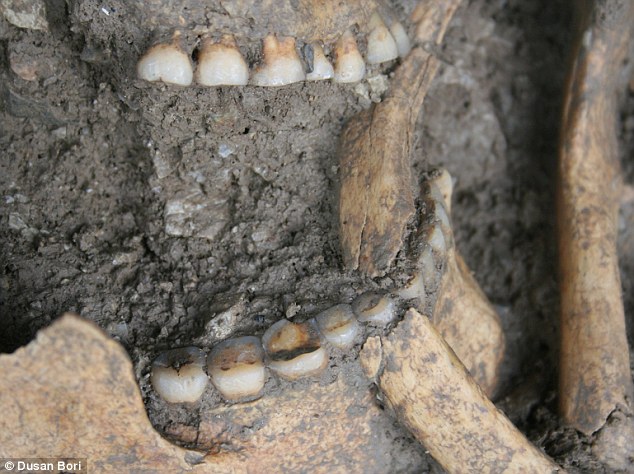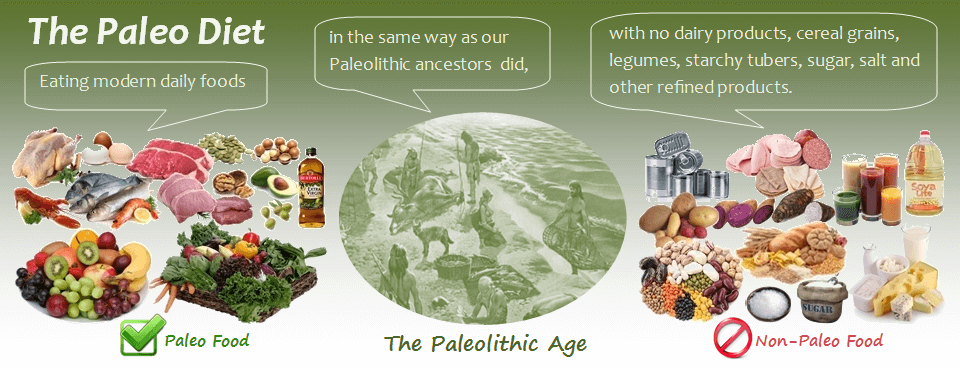
Proponents of the paleo diet claim that by imitating our ancestors from the Paleolithic Period or Stone Age (around 2.5 million years ago, until the onset of the agricultural revolution), we can be leaner and healthier. The high-protein, high-fiber paleo diet involves eating lean meat, fruits, vegetables, and nuts — a typical hunter-gatherer type diet.
The general idea is that since our ancestors were not exposed to grains, milk, sugar, yogurt, cheese, refined carbs, legumes, coffee or alcohol, we should eat “what we’re programmed to” and not fall for the modern foods that cause the “diseases of Western civilization” such as obesity, diabetes, cancer, heart attack and autoimmune issues.
Colorado State professor Dr Loren Cordain, author of The New York Times bestseller The Paleo Diet, argues that since our ancestors were not farmers, wheat and dairy or grains and legumes do not form part of the paleo diet. Basically, if a caveman didn’t eat it, neither can his successors who have embraced the paleo diet.
However, scientists from University of Cambridge, Cardiff University, University College London, and University of York have confirmed that everything the diet industry is marketing to you is just plain bullsh!t.
An analysis of the starch grains found in ancient teeth unearthed, with the remains of nine hunter gatherers uncovered in the Central Balkans, revealed that wheat and barley formed part of the actual ‘paleo diet’ as early as 6,600 BCE, more than 500 years earlier than previously thought. The researchers say the starch grains — similar to those found in the seeds of wheat and barley — the main staples of our ancestors from the Neolithic Period — are direct evidence that plant foods were a key source of energy for Stone Age hunter-gatherers.
Dr Emanuela Cristiani, an archaeologist at the University of Cambridge and first author of the study, told MailOnline:
“What we happened to discover has a tremendous significance as it challenges the established view of the Neolithization in Europe. It is very difficult to know exactly how the seeds were eaten from the evidence we have. But the micro-fossils we found in ancient tartar have cracks that are very likely to be the result of grinding activity. Also, many ground stones have been recovered at the examined sites so it might be that they were used for making a sort of coarse flour but we cannot be completely sure about that and how that would have been eaten.”
Researchers believe the hunter-gatherers were already eating cereal grains before they gave up the nomadic lifestyle and settled down. Dusan Borić, an archaeologist at the Cardiff University and lead researcher of the study, told Business Insider:
“There has been a long-standing view that for the most of the Paleolithic times, but also in the Mesolithic, animal protein coming from meat and fish was the main staple food with a very limited role of plant foods. At the time of the discovery we had the sense that these groups of complex hunter-gatherers were in contact with other more distant locations.”
Paleolithic, Mesolithic or Neolithic, our ancestors ate everything, depending upon local climate, environmental diversity, seasonal availability, and where in the world they lived. As a universal fad, though, the prehistoric people ate meat of all kinds, including that of humans. So, in that context, should the paleo diet lovers become cannibals? No, right? Basic common sense, right?
Eating only foods available to hunter–gatherers in the Paleolithic Period, is possible in the modern world, right? Wrong. Well, each and every food item today — fruits, vegetables or animals — is drastically different from its Paleolithic predecessor, says Christina Warinner of the University of Zurich. Watch her debunk the paleo diet below:
Plant-based meat-forward diet is fine, but carbohydrate-averse food regimen (a high-functioning human brain needs lots of glucose, which carbs provide) supposedly based on what our Paleolithic ancestors ate, does not stand up to scientific scrutiny. Several examples of recent and relatively speedy human evolution underscore that our anatomy and genetics have not been set in stone since the Stone Age, writes Scientific American:
“Within a span of 7,000 years, for instance, people adapted to eating dairy by developing lactose tolerance. Likewise, the genetic mutation responsible for blue eyes likely arose between 6,000 and 10,000 years ago.
“The organisms with which we share our bodies have evolved even faster, particularly the billions of bacteria living in our intestines. Our gut bacteria interact with our food in many ways, helping us break down tough plant fibers, but also competing for calories. We do not have direct evidence of which bacterial species thrived in Paleolithic intestines, but we can be sure that their microbial communities do not exactly match our own.”
This article (Everything You Knew About the Paleo Diet is Wrong. Here’s the Proof) is a free and open source. You have permission to republish this article under a Creative Commons license with attribution to the author and AnonHQ.com.







This is pretty nonsensical. As your first paragraph mentions, when discussing the paleolithic we are going back as far as millions of years in some instances. Looking back a few thousand (6-10) years to the beginning of man’s experimentations with grains doesn’t strike me as providing much insight into those diets.
By the way,this kind of evidence also seems to correlate to teeth with decay problems.
While this is interesting evidence, it is not proof. While I do believe that our hunter/gatherer ancestors ate cereal grains, I do not believe that they are them in the significant quantities that we do, nor were their diets filled with sugars and processed grains. So while the hyperbole around Paleo diets, both good and bad, are probably partially incorrect, at least folks are getting away from processed foods and cooking more.
This article is so confusing. In the first quote we see “it is very difficult to know exactly…” and “very likely to be…” and “it might be that…” and ” but we cannot be completely sure…”. Wow. So many assumptions, and no facts listed. And it has been proven in many studies that the brain functions better on ketones (from dietary fat) than it does on glucose, which the body does NOT need. In fact, ketones make the body as a whole function better and more efficiently. And now that so many people have lactose INTOLERANCE, let us not argue about our distant relatives adapting to eating dairy. Especially now that the dairy cows are fed GMO grains.
A diet based on clean, local, fresh fruits and veg as well as pastured meats is all anyone needs for good health. Grains and dairy are unnecessary for anyone, but may be enjoyed by everyone if it works for them.